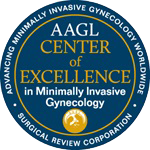Moschcowitz Procedure
Used in the early 20th century to treat rectal prolapse, the Moschcowitz procedure has since been adapted by gynecologists in the treatment of vaginal prolapse, particularly for women who have had a hysterectomy.
Causes of Vaginal Prolapse
The complex interplay of factors during the development of the vagina and the rectum while the baby in the uterus, as well as factors later in life such as multiple vaginal births, chronic constipation, chronic cough and repetitive heavy lifting are all contributors to the development of the vaginal prolapse.
The Moschcowitz Procedure
The Moschcowitz Procedure was originally described by Alexis Moschcowitz in 1911 for the treatment of rectal prolapse or "the rectal hernia." Dr. Moschcowitz's ground-breaking approach stemmed from the understanding of principles of embryonic development and normal anatomy. His surgical method of elevating the rectum and closing of the sac between the rectum and the vagina was soon adapted by gynecologists for the treatment of vaginal prolapse, particularly after hysterectomy.
How is the Moschcowitz procedure performed?
In the past, the Moschcowitz procedure was done primarily by open route. With the ability of the robotic arms to provide enhanced manipulation of the surgical instruments and suturing techniques, it now can be performed in a minimally invasive manner. This approach reduces post-operative pain, improves surgical cosmesis and assures better surgical techniques.
When is the Moschcowitz procedure performed?
The procedure is performed in a minimally invasive approach right after completion of a total hysterectomy (removal of the uterus and the cervix). The goal of the Moschcowitz procedure is to fix and suture the strong connective tissue that normally supports the uterus to the top of the vagina, thus preventing it from "falling out." At the same time, the pouch between the rectum and the vagina is reduced with a purse-string type suture.
Moschcowitz Procedure Candidates
A patient might be a good candidate for this type of the procedure if they are a good candidate for a robot-assisted laparoscopic hysterectomy (RALH) and has, or potentially might have in the future, prolapse of the vagina. A thorough discussion with your physician is the best way to determine if the surgery will benefit you.
Why Choose the University of Maryland Medical Center
The University of Maryland Medical Center and it's team of gynecologic surgeons strive to be on the front line of medical and surgical advances. We offer a variety of gynecological procedures that are enhanced by the use of minimally invasive surgical techniques, including robot-assisted surgery. These advanced approaches to gynecological surgery assure the surgical innovation and top quality care required of 21st century medicine.
Appointments
To make an appointment, please call 667-214-1300 or 866-608-4228.

